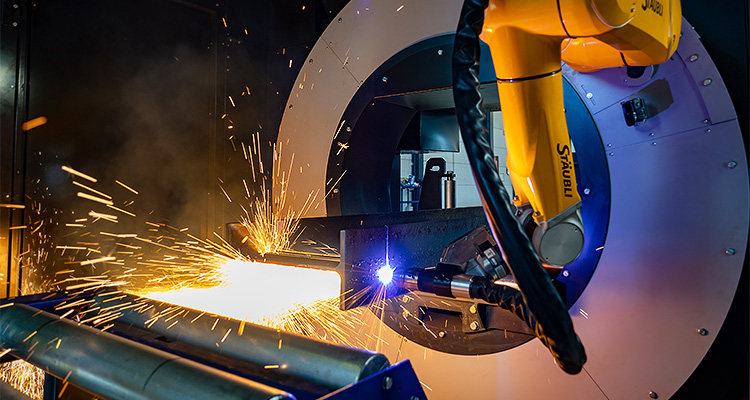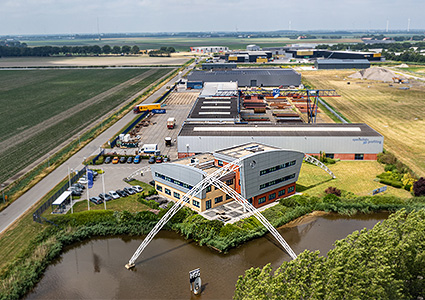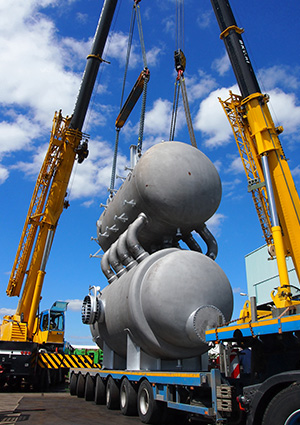
HGG Group is launching a product set to disrupt the market
HGG Group (HGG) began over 40 years ago in a small town north of Amsterdam when three engineers came together. Wiebe Wiersma, Chief Commercial Officer, shares the company’s history: “Mr. Hans Helmhout, Mr. Piet Goverse, and Mr. Pieter Glijnis founded the company, that’s also where the name HGG comes from. In the early days, we were fully devoted to the niche market of 3D pipe cutting. The beauty of that business was that we more or less allowed architects to design whatever they wanted because the pipes were not often being used in structural steel. Our machines are capable of matching extracted drawings from 3D CAD packages to develop structures such as the London Eye, for example, something that was impossible to fabricate before because there was no equipment with which to do so.
“Fast forward to more recent times, we began using robotics for cutting applications. The difference between us and many other companies in the industry is that we specialize in thermal cutting. Other OEMs (original equipment manufacturers) may also manufacture a lot of other complementary machines. We don’t do that. We are focused on 3D cutting. 
“As a company, we serve four major industries. For offshore wind and offshore oil and gas, we provide process piping and pipelines transporting liquids or gases. We are also active in shipbuilding; we have built automated profile cutting lines. Then lastly, we are also engaged in the structural steel sector. This is the area in which we’re experiencing the biggest growth. We have recently developed a new product which will be unveiled in April and which we are expecting to build further on this growth. This broad spread across different industries provides significant benefits to us; for example, when one of the sectors is underperforming, we can lean more on the other industries.
“As well as being an OEM, we also have a subcontracting business. We use our own machines to provide cutting services to the Netherlands, England, Germany, and the surrounding countries. This approach is very synergistic because we use our own machines; we are our own customers. It means we are able to notice things about our machines that many other OEMs don’t notice on their equipment because they are not users. When we notice something we don’t like about the way a machine is built, we relay this to the team and they then make adjustments accordingly. It gives us a much better understanding of the technology.”
Wiebe then goes on to reflect on the contributing factors to the company’s impressive growth and expansion over the last few years: “To achieve sustainable growth, there are elements that are of fundamental importance. One is to have a purpose, a reason to exist. Our purpose at HGG is to “revolutionize the world of steel.” While this may seem abstract, it truly encapsulates our dream. We have a proven track record of transforming this industry, and we are committed to continuing this legacy. With the launch of the APEX, we are set to revolutionize once more. Another crucial factor is being a sustainable business.

“Around ten years ago, we were serving the whole international market just from the Netherlands. Dutch people tend to think we can adapt pretty well to local cultures; we were wrong, though. As soon as we started hiring locals, we began to see the growth. If you want to grow internationally, you need to act locally. When you hire locals, they understand how business is conducted in that place and culture.”
Another exciting development that will help drive even more growth in the coming years is the launch of Apex. Wiebe explains the technology: “Around 12 years ago, a plasma-cutting robot was launched that allowed one machine to do all the cutting necessary and to work from 3D drawings. Since then, this machine as become the common solution. At HGG, we are a company driven by a passion for technology; as a result, our technology and the way we do things differently set us apart. We set ourselves the highest standards and constantly push the boundaries of what is possible.
“We designed a product that has a really disruptive design. Now we have a robotic machine which rotates 360 degrees around the profile; this is a concept that nobody has used before and is patented by HGG. This product allows the robot full freedom in the whole cutting envelope. This not only makes the operation faster but also increases potential tonnage output. We believe the product can potentially double the output of any other machine in the market.
“The equipment is also a whole lot more versatile; it can cut all the profiles a fabricator ever needs. The components we are using within the machine are also proven technology. We developed the laser measurement technology as well as the cutting software behind it in-house. Because we are a user as well as developers of the component technologies using our own intellectual property, we are not reliant on third parties; this provides us with significant competitive advantages.”
Looking to the future, Wiebe concludes by outlining the company’s priorities moving forward: “Customer satisfaction and strategic developments will be high priorities for us. Developing complex technology, it can be easy to focus too much on the product itself rather than the support structure that surrounds it. We’re investing heavily to make sure this part of the process is at the same superb quality level that is evident in our products. For example, we want to be able to ship parts the same day to anywhere in the world. Strategic developments will also be crucial; this is at our core. We need to continue to disrupt the marketplace with revolutionary new technologies.”